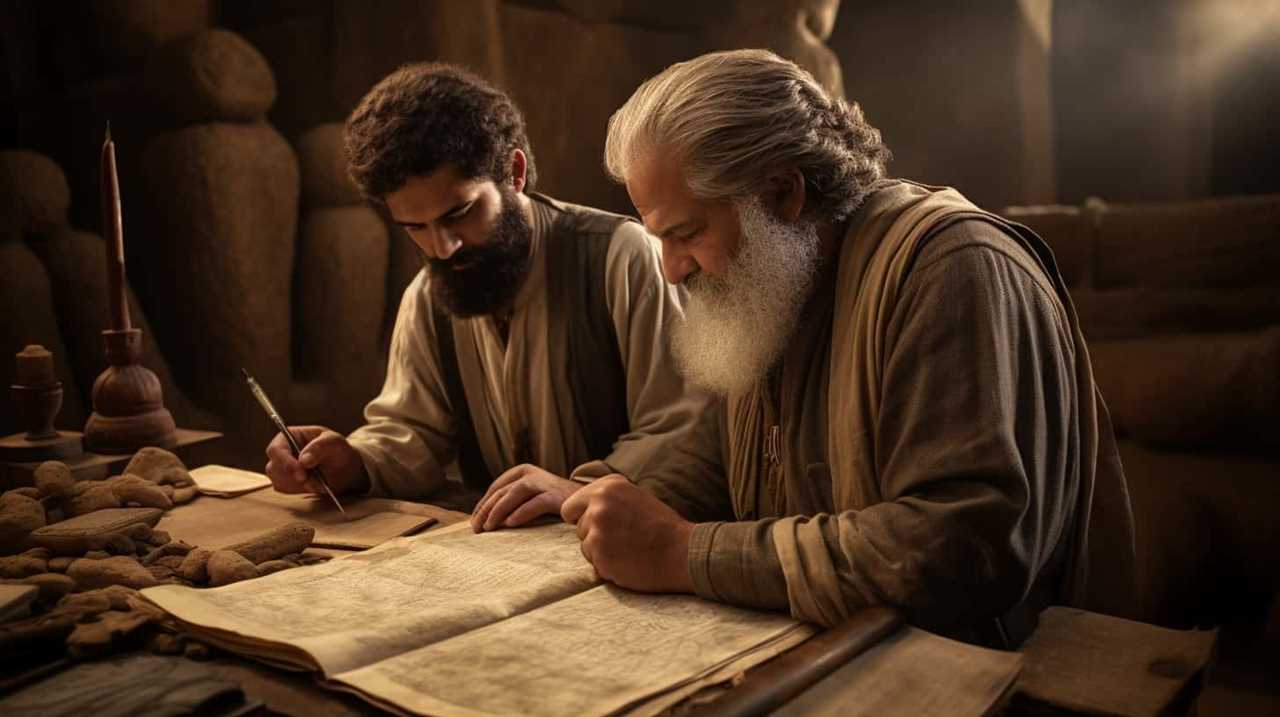Greetings, fellow pursuers of expertise, as we embark on an exploration into the profound insights of ancient Greek thinkers.
In this profound exploration, we will uncover 11 timeless life lessons that have endured the test of time.
Just as a lighthouse guides ships through treacherous waters, these teachings will illuminate our path towards a more enlightened existence.
From Socrates’ teachings on self-awareness to Epictetus’ wisdom on acceptance, each lesson offers a precious pearl of insight to be cherished and applied in our daily lives.

Through the lens of these great thinkers, we will discover the keys to inner strength, balance, happiness, and resilience.
So, let us embark on this transformative quest, as we unravel the profound mysteries left behind by the ancient Greek philosophers.
Key Takeaways
- Introspection and self-improvement: Ancient Greek philosophers emphasized the importance of questioning beliefs, seeking knowledge, and engaging in self-reflection for personal growth and self-awareness.
- Pursuit of truth and intellectual curiosity: Plato’s teachings highlighted the value of exploring ideas, pursuing truth, and cultivating intellectual curiosity as a means of gaining true knowledge.
- Finding balance and inner harmony: Aristotle’s lessons focused on balancing work and leisure, prioritizing relationships, and practicing self-care to cultivate inner harmony and fulfillment in life.
- Seeking happiness within and embracing the present moment: Epicurus and Zeno taught the importance of simplicity, meaningful relationships, gratitude, and living in the present moment for finding happiness and enhancing self-awareness.
Socrates’ Teachings on Self-Awareness
As we explore Socrates’ teachings on self-awareness, we discover that he emphasized the importance of introspection and questioning one’s own beliefs. Socrates’ method of questioning, known as the Socratic method, has had a profound influence on modern philosophy. It’s through this method that Socrates encouraged individuals to examine their own thoughts, opinions, and assumptions. By engaging in this process of introspection, we’re able to gain a deeper understanding of ourselves and the world around us.
Socrates believed that true wisdom comes from acknowledging our own ignorance. He challenged his students and fellow citizens to question everything, to not simply accept the status quo, and to constantly seek knowledge and self-improvement. This approach to self-awareness is still relevant today, as it encourages us to critically examine our beliefs and values, and to be open to new perspectives and ideas.

Socrates’ influence on modern philosophy can be seen in the emphasis placed on self-reflection and the pursuit of truth. His method of questioning serves as a powerful tool for self-discovery and personal growth. By questioning our own beliefs and assumptions, we’re able to uncover biases, challenge our own thinking, and ultimately, become more self-aware individuals.
Plato’s Wisdom on the Pursuit of Truth
Plato’s wisdom on the pursuit of truth offers valuable insights into our human quest for knowledge. His epistemological theory emphasizes the importance of seeking absolute knowledge, unshackled by the limitations of our senses.
Plato encourages us to transcend the physical world and explore the realm of ideas, where true understanding resides. Through his teachings, he reminds us that the pursuit of truth requires intellectual curiosity, open-mindedness, and a willingness to challenge our own perceptions.
Plato’s Epistemological Theory
While exploring the timeless wisdom of ancient Greek philosophers, we delve into Plato’s epistemological theory, which offers valuable insights into the pursuit of truth.
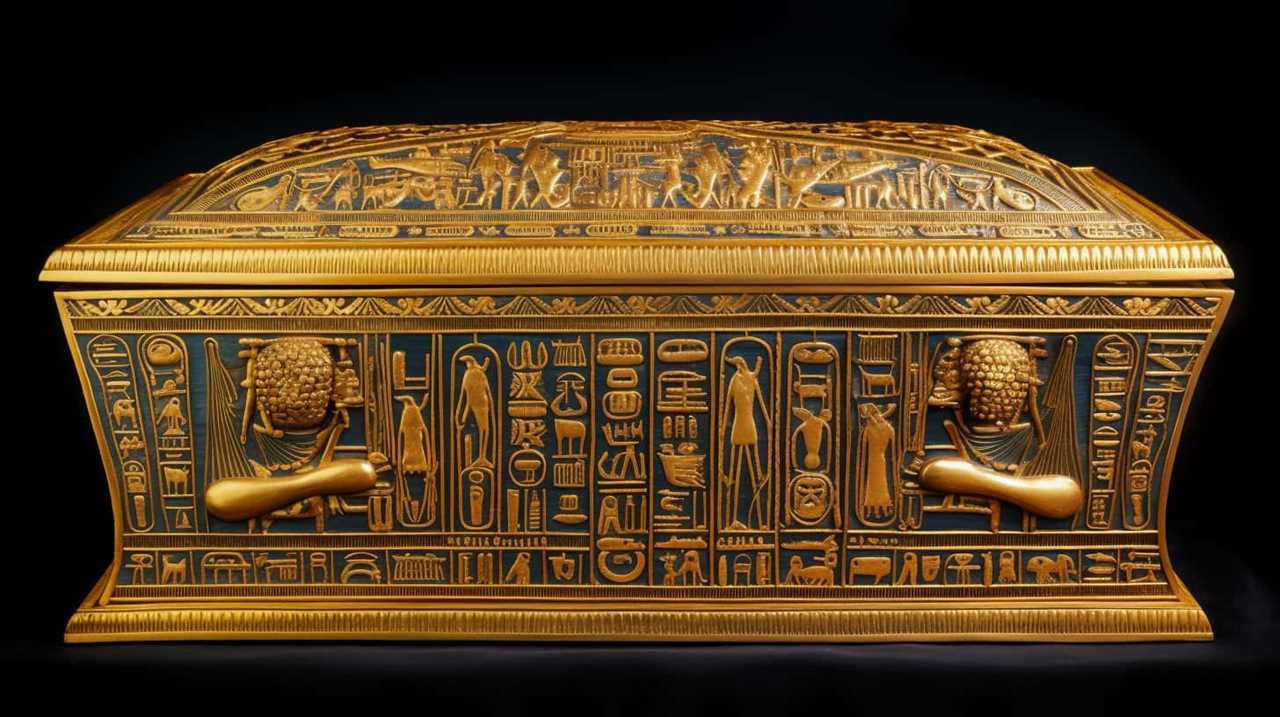
Plato’s theory of knowledge acquisition is centered around the idea that true knowledge isn’t obtained through the senses, but rather through a process of intellectual reasoning and reflection. According to Plato, the physical world is merely a reflection of a higher, ideal realm of existence.
In order to attain true knowledge, one must engage in a dialectic process of questioning, reasoning, and contemplation. This process allows individuals to gradually ascend from the imperfect realm of sensory perception to the realm of pure and absolute truth.
By understanding Plato’s epistemological theory, we gain a deeper understanding of the importance of critical thinking and intellectual inquiry in the search for truth.
In the subsequent section, we’ll explore Plato’s insights on seeking absolute knowledge and the implications of this pursuit in our lives.
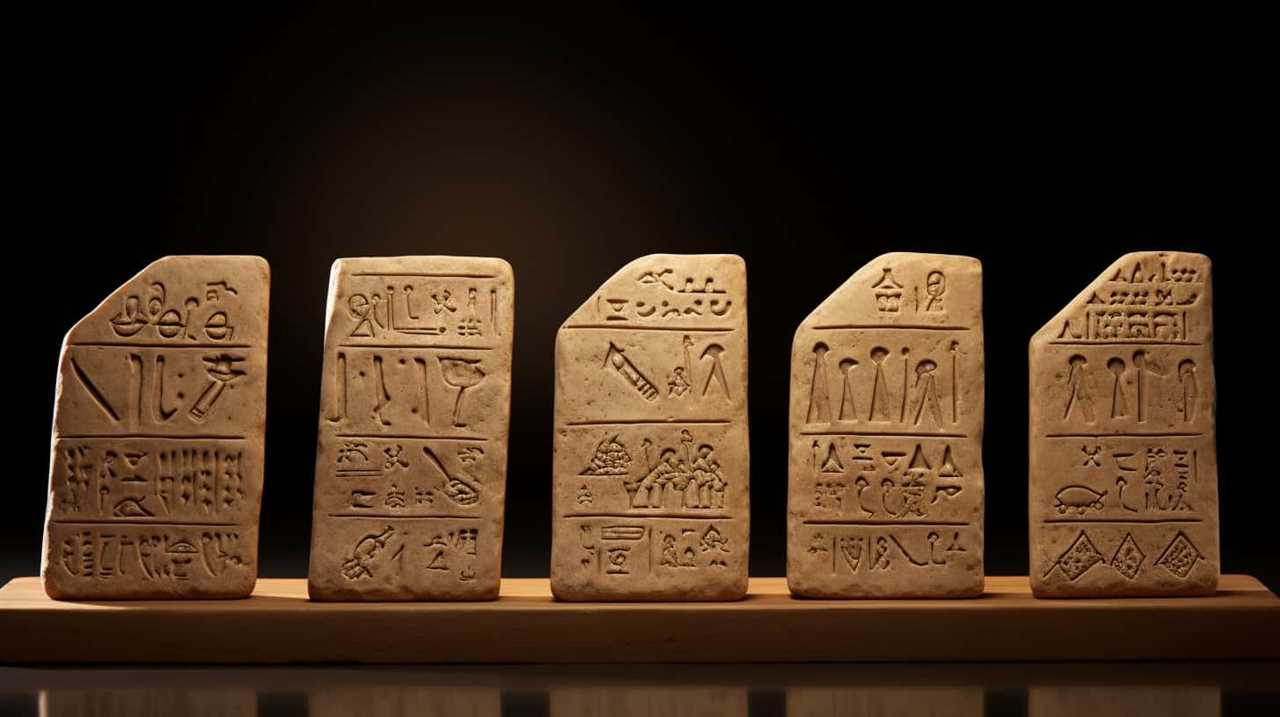
Seeking Absolute Knowledge
We embark on a journey to uncover the wisdom of ancient Greek philosopher Plato as we explore the pursuit of absolute knowledge.
In Plato’s philosophy, the quest for truth and certainty is a fundamental aspect of human existence. Plato believed that true knowledge could only be obtained through the contemplation of abstract, timeless forms, which transcend the physical world.
However, he also acknowledged the limits of human knowledge, recognizing that our perceptions are subjective and influenced by our own biases and limitations. Plato understood that our understanding of reality is imperfect and that absolute knowledge might be beyond our grasp.
Despite these limitations, Plato urged us to strive for truth and certainty, as the pursuit itself is a noble endeavor that can lead to personal growth and enlightenment.
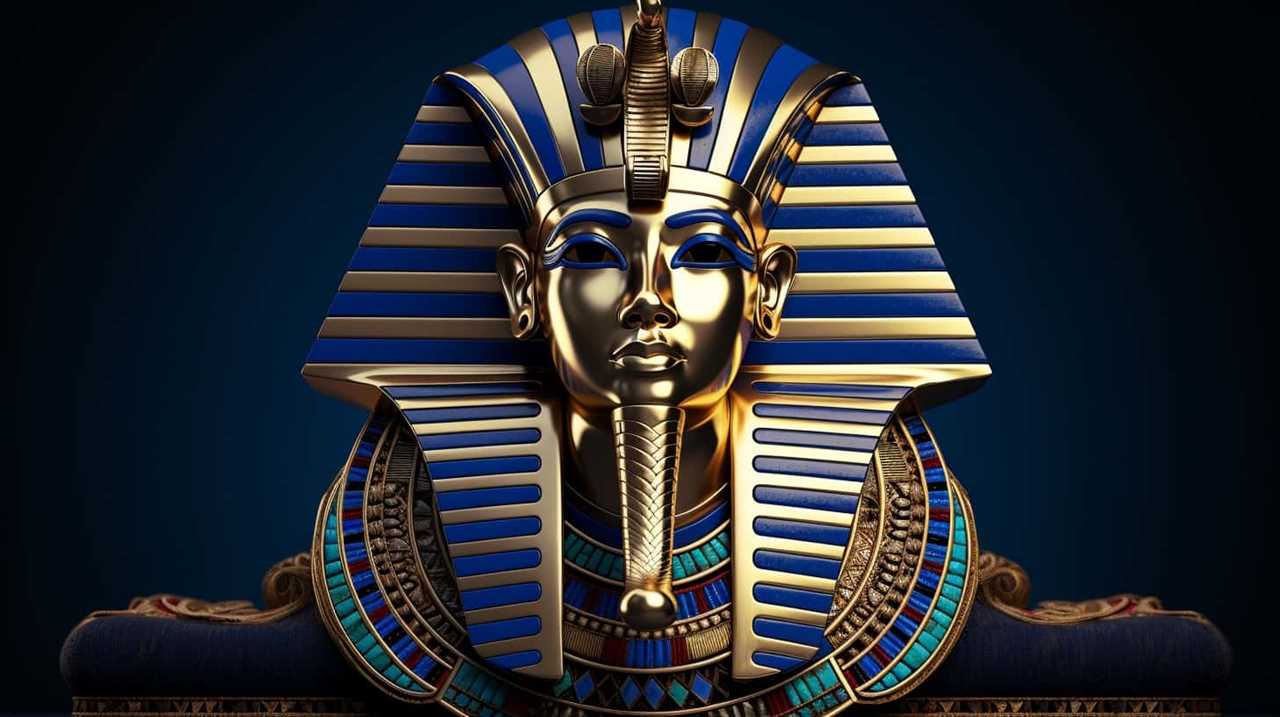
Aristotle’s Lessons on Finding Balance in Life
When it comes to finding balance in life, Aristotle offers valuable insights that are still relevant today. One key lesson is the importance of balancing work and leisure. Aristotle believed that work shouldn’t consume our entire lives, but rather be balanced with moments of rest and relaxation.
Additionally, he emphasized the need to prioritize relationships and self-care, recognizing that our well-being depends on meaningful connections and taking care of ourselves physically and mentally.
Lastly, Aristotle highlighted the significance of cultivating inner harmony, finding a sense of peace and contentment within ourselves.
These timeless lessons from Aristotle remind us of the importance of finding balance in all aspects of our lives.
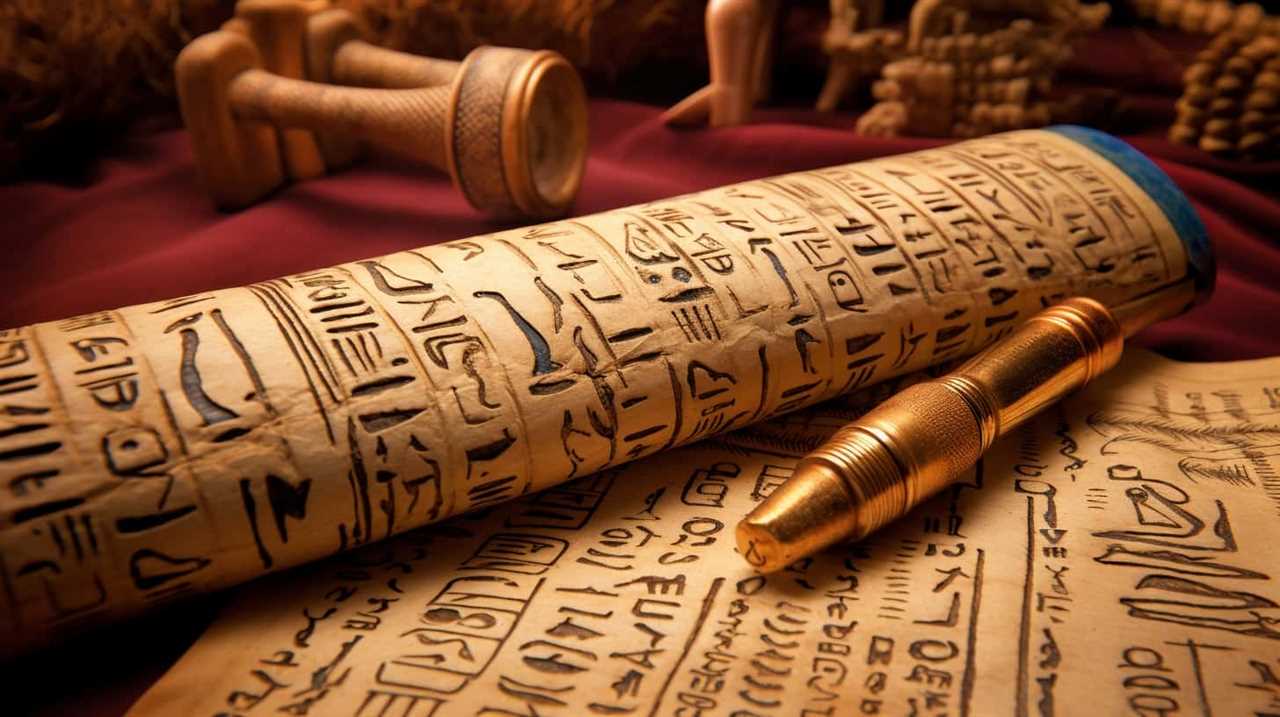
Balancing Work and Leisure
Aristotle’s teachings on finding balance in life offer timeless lessons on how to effectively manage both work and leisure. In today’s fast-paced world, achieving a work-life balance has become increasingly challenging.
Many of us find ourselves consumed with work, often neglecting the importance of leisure and personal well-being. Aristotle emphasizes the need for moderation in all aspects of life, including work and leisure. He believed that excessive work can lead to burnout and diminish one’s overall quality of life. On the other hand, neglecting work entirely can result in a lack of purpose and fulfillment.
Aristotle suggests that finding the right balance between work and leisure is crucial for achieving happiness and living a fulfilling life. By prioritizing leisure and giving ourselves time to recharge, we can enhance our productivity, creativity, and overall well-being.
Aristotle’s teachings remind us that finding a harmonious balance between work and leisure is key to living a meaningful and fulfilling life.

Prioritizing Relationships and Self-Care
In the pursuit of balance in life, prioritizing relationships and self-care plays a crucial role, as emphasized by the teachings of ancient Greek philosopher Aristotle. To find harmony within ourselves and with others, we must prioritize self-reflection and nurturing meaningful connections.
Here are some key lessons from Aristotle on finding this balance:
- Self-Reflection: Take time for introspection and self-evaluation. Understand your values, strengths, and weaknesses. This self-awareness will guide you in making choices that align with your true self.
- Nurturing Relationships: Cultivate deep and meaningful connections with others. Invest time and effort in building and maintaining healthy relationships. Surround yourself with people who support and inspire you.
- Setting Boundaries: Learn to say no when necessary. Establishing boundaries helps protect your well-being and ensures that you have the time and energy to devote to yourself and your relationships.
- Practicing Self-Care: Prioritize your physical, mental, and emotional well-being. Engage in activities that bring you joy and recharge your energy. Take care of yourself, so you can better care for others.
- Finding Balance: Strive for a harmonious blend of personal time and social interactions. Balance solitude and socializing to maintain a healthy equilibrium between self-reflection and nurturing relationships.
Cultivating Inner Harmony
To cultivate inner harmony, we must prioritize finding a balance in life.
Aristotle, the renowned Greek philosopher, offers valuable lessons on achieving emotional balance and finding inner peace. In our quest for harmony, Aristotle suggests that we should strive for moderation in all aspects of life. By avoiding extremes and embracing the golden mean, we can navigate the complexities of our emotions and experiences.

Aristotle encourages us to recognize our own needs and desires, while also considering the well-being of others. He emphasizes the importance of self-reflection and self-awareness, as these qualities enable us to make conscious choices that align with our values and lead to a harmonious existence.
Epicurus’ Advice on Seeking Happiness Within
Our pursuit of happiness can be enriched by following Epicurus’ timeless advice on seeking happiness within ourselves. In our quest for inner contentment and the pursuit of personal fulfillment, Epicurus offers profound insights that resonate even in today’s fast-paced world. Here are five key teachings from Epicurus that can guide us towards finding true happiness within:
- Cultivate simplicity: Epicurus believed that simplicity is the key to finding happiness. By detaching ourselves from unnecessary desires and material possessions, we can free ourselves from the constant pursuit of external validation and find contentment in the present moment.
- Nurture meaningful relationships: Epicurus emphasized the importance of surrounding ourselves with genuine friends and loved ones who bring us joy and support. By prioritizing quality over quantity, we can create a meaningful social circle that enriches our lives.
- Practice gratitude: Epicurus encouraged us to appreciate the simple pleasures of life and be grateful for what we have. By cultivating a mindset of gratitude, we can shift our focus from what we lack to what we already possess, fostering a sense of contentment and fulfillment.
- Embrace moderation: Epicurus advocated for moderation in all aspects of life. By avoiding excess and finding a balance between indulgence and restraint, we can avoid the pitfalls of overindulgence and lead a more harmonious and fulfilling existence.
- Live in the present: Epicurus urged us to fully immerse ourselves in the present moment and savor the experiences life has to offer. By letting go of past regrets and future anxieties, we can find true happiness in the here and now.
By incorporating these timeless teachings into our lives, we can embark on a journey towards inner peace and lasting happiness.
Transitioning into Zeno’s teachings on embracing the present moment, we can further explore how ancient Greek philosophy can guide us in our quest for a fulfilling life.

Zeno’s Teachings on Embracing the Present Moment
When it comes to embracing the present moment, Zeno’s teachings offer valuable insights.
One of the key points is the importance of present awareness, which encourages us to fully engage with our surroundings and be mindful of the here and now.
Zeno teaches us to overcome distractions and worries by focusing on the present moment, allowing us to fully experience life and find contentment in the present.
Value of Present Awareness
In order to fully appreciate the value of present awareness, we must actively engage in embracing the present moment according to Zeno, the ancient Greek philosopher. Mindfulness in daily life is a practice that cultivates our ability to be fully present, allowing us to experience life more deeply. Living in the present moment offers a myriad of benefits that can enhance our overall well-being and personal growth.
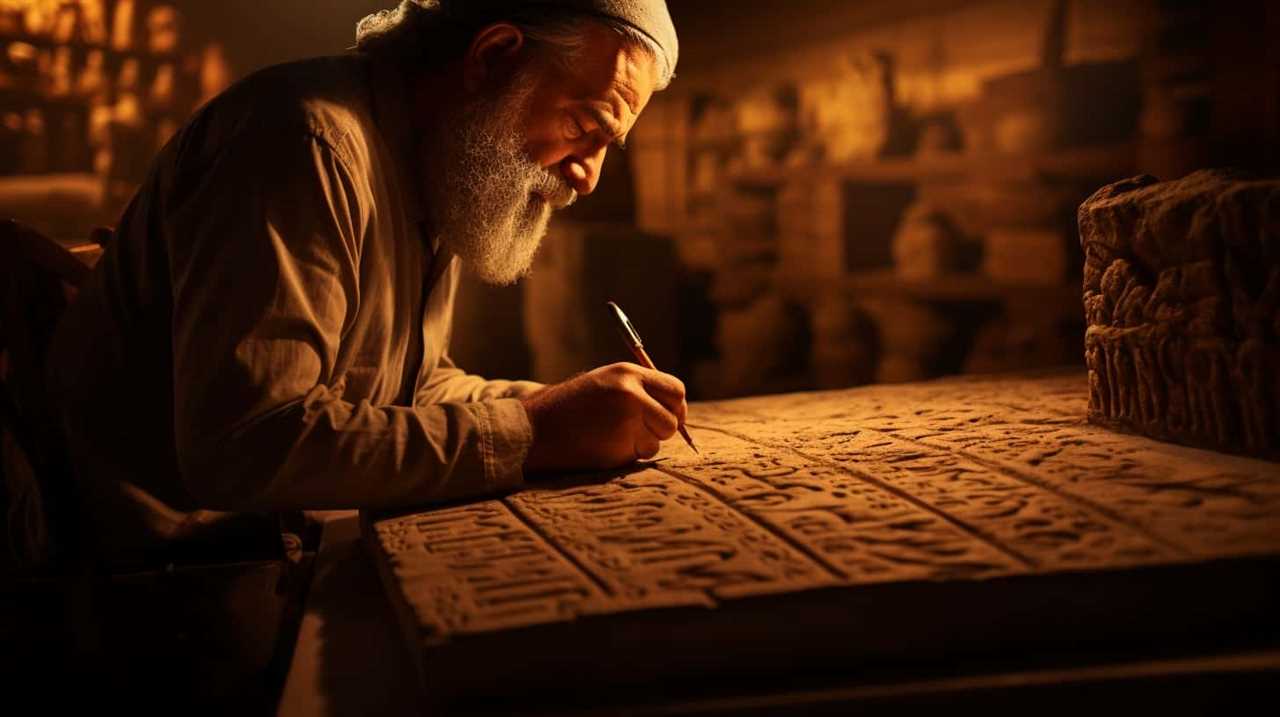
Here are five key benefits of embracing the present moment:
- Increased focus and concentration, leading to improved productivity and efficiency.
- Reduced stress and anxiety, as we let go of worries about the past or future.
- Enhanced relationships, as we give our full attention and actively listen to others.
- Greater self-awareness, enabling us to understand our thoughts, emotions, and behaviors.
- Heightened appreciation for the beauty and joy in everyday moments.
Overcoming Distractions and Worries
How can we overcome distractions and worries and fully embrace the present moment, according to Zeno’s teachings?
Zeno, the ancient Greek philosopher and founder of Stoicism, offers valuable insights on finding peace and managing stress in our lives. One of his central teachings is the importance of focusing on the present moment and letting go of external distractions and worries.
Zeno believed that by practicing mindfulness and cultivating an awareness of the present, we can free ourselves from the anxieties and stresses that often plague us. This requires discipline and a conscious effort to redirect our attention away from past regrets or future uncertainties.

Embracing the Here-Now
To truly embrace the present moment, we must consciously redirect our attention away from external distractions and worries, as Zeno teaches us. Mindful presence and living in the moment are essential practices for achieving this state of being.
Here are five key insights from Zeno’s teachings on embracing the here-now:
- Cultivate awareness: By paying attention to our thoughts, feelings, and sensations, we become more attuned to the present moment.
- Let go of attachments: By releasing our attachment to the past and future, we free ourselves to fully experience the richness of the present.
- Practice acceptance: Embracing the here-now requires accepting things as they are, without judgment or resistance.
- Engage the senses: By fully engaging our senses, we can immerse ourselves in the present moment and appreciate its beauty.
- Find joy in simplicity: Embracing the here-now means finding joy in the simple pleasures of life, appreciating the small moments that often go unnoticed.
Pythagoras’ Lessons on the Power of Numbers
Through the exploration of Pythagoras’ teachings, we discover the profound impact that numbers have on our understanding of the world. Pythagoras, the renowned philosopher and mathematician, believed in the power of numerology, the study of the mystical significance of numbers. He taught that numbers aren’t mere symbols, but rather, they hold a deeper meaning and can be used as tools for self-discovery and personal growth.
One of Pythagoras’ lessons on the power of numbers is the importance of applying mathematical principles in daily life. He believed that mathematics isn’t just an abstract concept, but a practical tool that can be utilized to solve real-world problems. By understanding and using numbers, we can make informed decisions, solve complex equations, and analyze data to gain valuable insights.
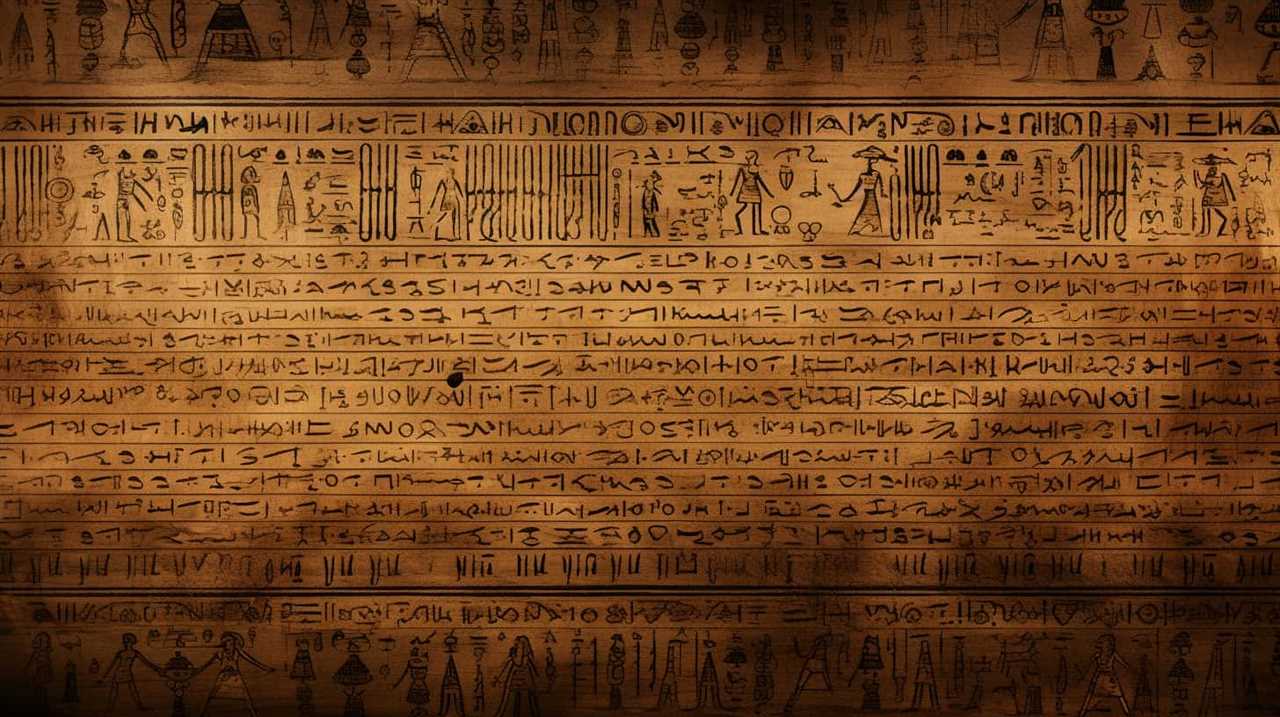
Pythagoras also taught that numbers are the language of the universe. He believed that everything in the world can be represented and understood through numbers. From the movements of celestial bodies to the rhythms of music, numbers reveal the underlying order and harmony of the universe. By studying and interpreting these numerical patterns, we can gain a deeper understanding of the world around us.
Heraclitus’ Wisdom on Embracing Change
Heraclitus’ wisdom teaches us the importance of embracing change in our lives. In a world that’s constantly evolving, learning to adapt to new circumstances is essential for personal growth and success. Here are five key lessons we can learn from Heraclitus when it comes to embracing change:
- Change is inevitable: Heraclitus famously said, ‘The only constant in life is change.’ This reminds us that change is a natural part of the human experience and resisting it only leads to frustration and stagnation.
- Embrace the flow: Heraclitus believed that everything is in a state of flux, like a river constantly flowing. By accepting this flow and going with it, we can navigate through life’s challenges with grace and ease.
- Seek wisdom through change: According to Heraclitus, change isn’t only inevitable but also a source of wisdom. By embracing change, we open ourselves up to new perspectives, ideas, and experiences that can enrich our lives.
- Let go of attachments: Heraclitus emphasized the importance of detaching ourselves from the material world. By letting go of our attachments, we become more flexible and adaptable to change.
- Find harmony in opposites: Heraclitus believed that opposites are interconnected and necessary for balance. Embracing change means embracing the duality of life and finding harmony in contrasting experiences.
By embracing change and adapting to new circumstances, we can cultivate resilience, growth, and a deeper understanding of ourselves and the world around us.
Now, let’s explore Diogenes’ advice on living a simple life.

Diogenes’ Advice on Living a Simple Life
After exploring Heraclitus’ wisdom on embracing change, we now turn to Diogenes’ advice on living a simple life. Diogenes, a prominent figure in ancient Greek philosophy, advocated for a minimalist lifestyle that embraced simplicity in all aspects. He believed that by detaching ourselves from material possessions and societal expectations, we could achieve true freedom and happiness.
Diogenes’ teachings can be summarized in the following table:
| Living Minimally | Embracing Simplicity |
|---|---|
| Focus on basic needs | Avoid unnecessary desires |
| Embrace frugality | Reject consumerism |
| Practice self-sufficiency | Be content with little |
| Live in harmony with nature | Appreciate the beauty of simplicity |
Living minimally means prioritizing what truly matters and letting go of excess. It involves simplifying our lives, decluttering our minds, and finding joy in the little things. By embracing simplicity, we free ourselves from the constant pursuit of material wealth and societal validation.
Diogenes’ advice on living a simple life is as relevant today as it was in ancient Greece. In our modern world, filled with distractions and a culture of consumerism, his teachings serve as a reminder to focus on what truly brings us happiness and fulfillment. By living minimally and embracing simplicity, we can find greater peace, contentment, and a deeper connection with ourselves and the world around us.

Empedocles’ Teachings on the Interconnectedness of All Things
Now let’s explore Empedocles’ teachings on the interconnectedness of all things.
According to this ancient Greek philosopher, everything in the universe is interconnected and influenced by four fundamental elements: earth, air, fire, and water. These elements are constantly interacting and transforming, creating a dynamic web of connections and relationships.
Empedocles believed that maintaining harmony and balance among these elements was crucial for the well-being of both individuals and society as a whole. He emphasized the importance of understanding and respecting the interconnectedness of all things in order to live a fulfilling and meaningful life.
Here are five key insights from Empedocles’ teachings:
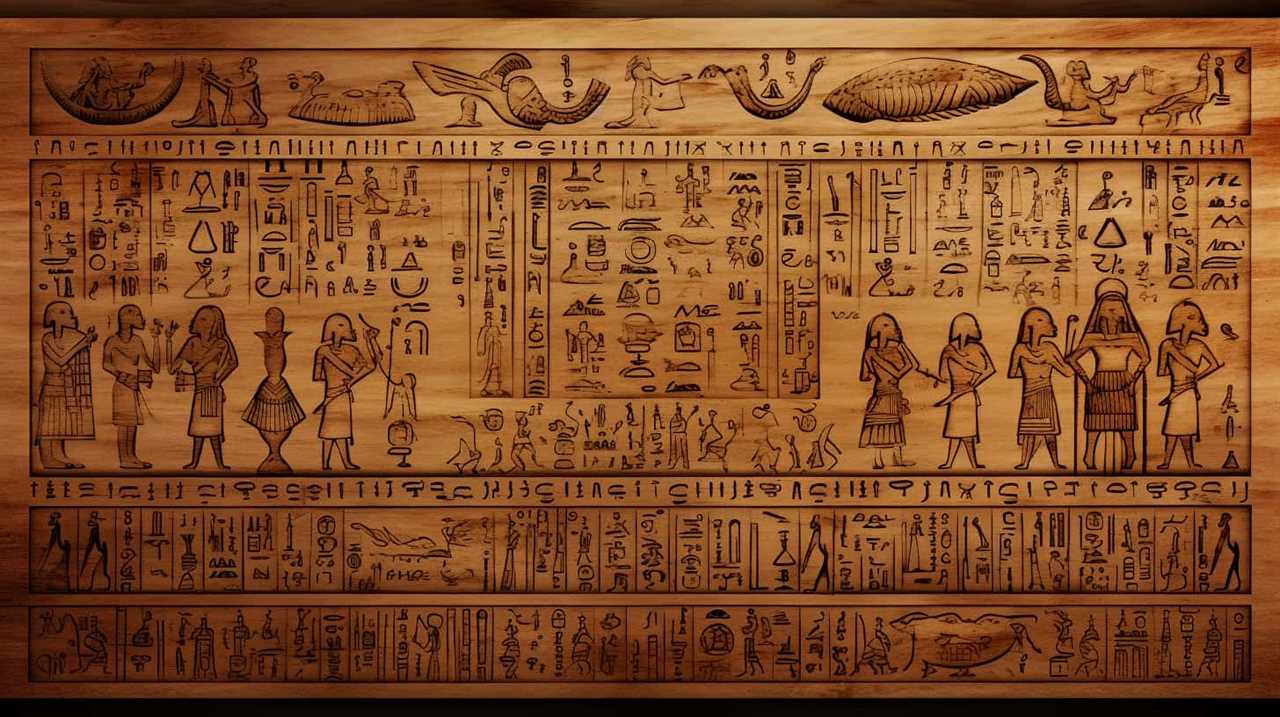
- Interconnectedness: Everything in the universe is connected, and our actions have ripple effects that can impact the world around us.
- Harmony and Balance: Maintaining a harmonious balance among the elements is essential for a healthy and balanced life.
- Unity in Diversity: Despite their differences, all things are part of the same interconnected whole.
- Cause and Effect: Every action we take has consequences, and we must be mindful of the impact we’ve on the world.
- Respect for Nature: Empedocles emphasized the importance of living in harmony with nature and understanding our place within it.
Marcus Aurelius’ Lessons on Inner Strength and Resilience
Continuing our exploration of ancient Greek philosophers’ teachings on interconnectedness, we now turn to Marcus Aurelius’ lessons on inner strength and resilience. In his book, ‘Meditations,’ Aurelius emphasizes the importance of cultivating inner resilience and developing strength in the face of adversity. He believed that true strength comes from within, and that we’ve the power to shape our own reactions and attitudes towards the challenges we encounter.
Aurelius encourages us to recognize that external events are beyond our control, but we’ve control over how we respond to them. He teaches us that by focusing on our inner thoughts and emotions, we can build a solid foundation of resilience. By harnessing our inner strength, we can navigate through life’s trials with grace and equanimity.
One of Aurelius’ key teachings is the practice of self-reflection. He urges us to examine our thoughts and beliefs, challenging ourselves to develop a mindset that’s resilient and adaptable. By doing so, we can cultivate the inner strength needed to face any situation with courage and fortitude.
In conclusion, Marcus Aurelius’ teachings on inner strength and resilience remind us that we’ve the power to shape our own reactions and attitudes towards life’s challenges. By developing our inner resilience, we can navigate through difficult times with strength and grace.

As we delve deeper into the wisdom of ancient Greek philosophers, let’s now explore Epictetus’ teachings on accepting what we can’t control.
Epictetus’ Wisdom on Accepting What We Cannot Control
Epictetus’ wisdom lies in teaching us the importance of accepting what we can’t control. His teachings on stoicism provide valuable insights into practicing acceptance and resilience in our daily lives.
Here are five key lessons we can learn from Epictetus’ teachings:
- Recognize the difference between what’s within our control and what’s not. By focusing our energy on things we can influence, we avoid wasting efforts on matters beyond our reach.
- Embrace the power of acceptance. Instead of resisting or fighting against circumstances we can’t change, we should learn to accept them and find peace within ourselves.
- Cultivate inner strength and resilience. Epictetus emphasizes the importance of developing our character and mindset to withstand the challenges and hardships that life presents.
- Let go of attachment to external outcomes. Epictetus encourages us to detach ourselves from the outcomes of our actions, as they’re often beyond our control. Instead, we should focus on doing our best and finding fulfillment in the process.
- Practice mindfulness and self-awareness. By being present in the moment and understanding our own thoughts and emotions, we can better navigate difficult situations and respond with wisdom and clarity.
In following Epictetus’ teachings, we can enhance our ability to accept what we can’t control, build resilience, and find inner peace amidst the uncertainties of life.

Frequently Asked Questions
How Can Socrates’ Teachings on Self-Awareness Be Applied to Modern-Day Life?
We can apply Socrates’ teachings on self-awareness to modern-day life by incorporating them into our personal growth journey. By enhancing our emotional intelligence through self-awareness, we can gain a deeper understanding of ourselves and make better choices for our well-being.
What Were Plato’s Views on the Pursuit of Truth and How Do They Differ From Other Ancient Greek Philosophers?
Plato’s views on the pursuit of truth set him apart from other ancient Greek philosophers. His epistemology, centered on his theory of forms, emphasized the existence of a higher reality beyond the physical world.
How Can Aristotle’s Lessons on Finding Balance in Life Be Implemented in Our Fast-Paced and Hectic Modern World?
In our fast-paced and hectic modern world, we can implement Aristotle’s lessons on finding balance by prioritizing self-care, setting boundaries, and embracing moderation. These timeless principles can help us navigate the complexities of life with wisdom and harmony.
What Specific Advice Did Epicurus Give on Seeking Happiness Within Oneself and How Can It Be Practiced in Our Daily Lives?
Practicing self reflection and cultivating inner peace are key to following Epicurus’ advice on seeking happiness within oneself. By examining our thoughts and actions, we can find contentment and tranquility in our daily lives.
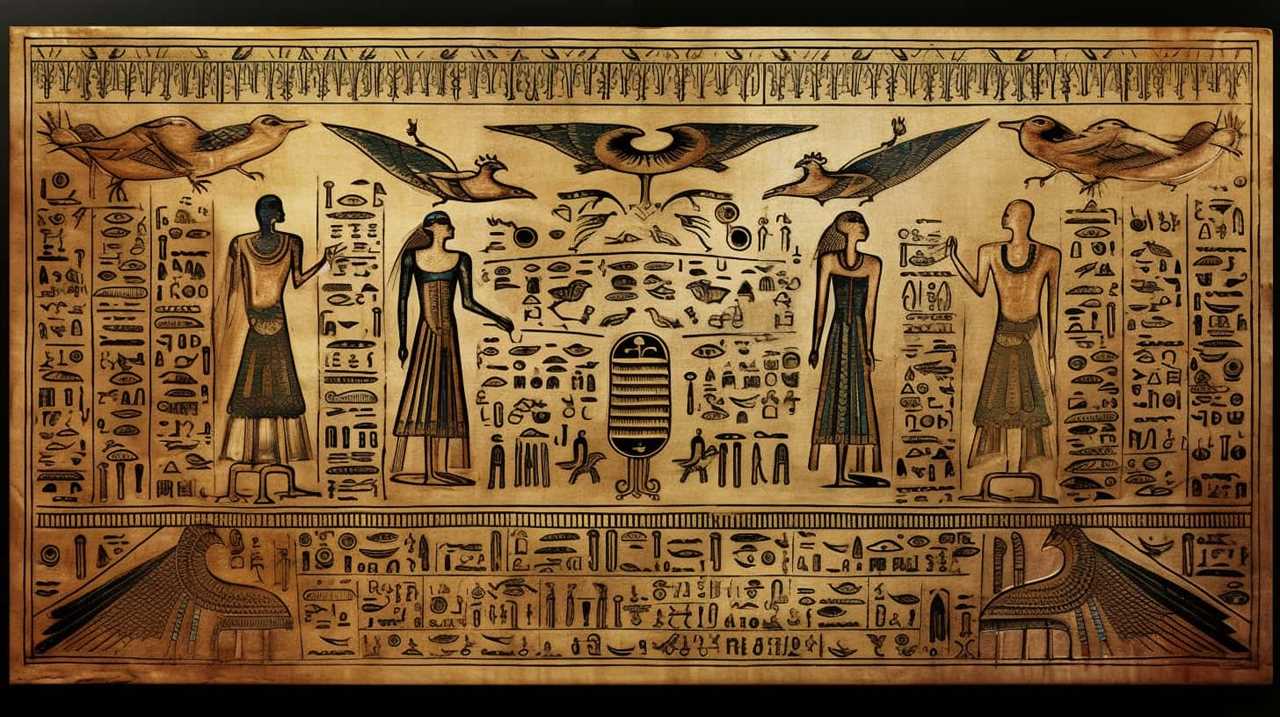
How Can Zeno’s Teachings on Embracing the Present Moment Help Us Live a More Mindful and Fulfilling Life in Today’s Society?
Embracing mindfulness and present moment awareness can transform our lives. By fully immersing ourselves in the present, we can experience a deeper sense of fulfillment and cultivate a greater appreciation for the beauty and richness of life.
Conclusion
In our modern world, filled with constant distractions and pressures, it’s easy to lose sight of the timeless wisdom imparted by the ancient Greek philosophers. Their teachings on self-awareness, truth, balance, happiness, and acceptance still hold relevance today.
By embracing these life lessons, we can find a deeper understanding of ourselves and the world around us. So let’s not dismiss the wisdom of the past, but rather embrace it with open minds and hearts, and discover the profound impact it can have on our lives.
Lauren’s talent in writing is matched by her passion for storytelling. Her love for books and deep understanding of culture and entertainment add a distinct flavor to her work. As our media and press contact, Lauren skillfully bridges the gap between afterQuotes and the broader media landscape, bringing our message to a wider audience.






